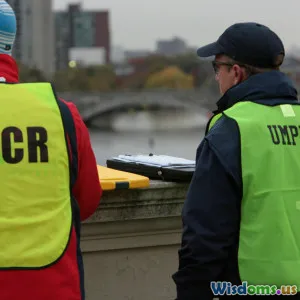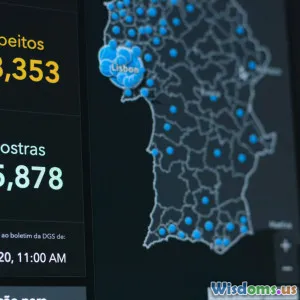
Five Real Cases Where Interagency Missteps Delayed Justice
7 min read Explore five compelling cases where interagency missteps delayed justice, revealing lessons on improving collaboration and accountability across law enforcement entities. (0 Reviews)
Five Real Cases Where Interagency Missteps Delayed Justice
Justice delayed is justice denied—a maxim underscoring the profound impact miscoordination can have in criminal investigations. Across the world, cooperation between law enforcement, prosecutors, forensic experts, and other agencies is meant to ensure expediency and accuracy in upholding the law. However, the reality often reveals glaring weaknesses in interagency collaboration, causing unacceptable delays in justice.
This article delves into five emblematic, real-world cases where failures in cross-agency communication, procedural errors, or jurisdictional conflicts postponed justice. Through detailed examination, we uncover structural pitfalls that obstructed timely resolution and glean valuable lessons to foster smoother interagency functioning.
Case 1: The Eastville Serial Burglaries – Communication Breakdown Between Local PD and Federal Authorities
Background
In 2016, the Eastville suburb experienced a spike in serial burglaries involving skilled offenders targeting high-end residences. The local police department diligently collected evidence and made arrests but did not immediately communicate with federal authorities even though cross-state thefts suggested a broader crime network.
What Went Wrong?
Local police focused on neighborhood investigations without establishing rapport with federal investigative units tasked with interstate crime. This siloed approach meant critical information about stolen property crossing state lines remained compartmentalized.
Consequences
Investigations dragged on for over a year until a parallel FBI inquiry uncovered connections to a larger crime ring. The delay allowed key suspects to flee, prolonging victim distress and leading to reduced confidence in local law enforcement.
Key Insight: Early information sharing protocols between different levels of law enforcement are pivotal for crimes with potentially expansive geographical footprints.
Case 2: The Harper Family Murder – Forensic Evidence Mishandling Between Crime Lab and Prosecutor’s Office
Overview
The 2018 Harper family murder case hinged on DNA evidence allegedly linking a suspect to the crime scene. The state crime lab processed the samples but lacked standardized communication lines with the prosecutor's office.
The Misstep
The crime lab experienced backlogs and delayed reporting crucial DNA results. Worse, lab technicians were not trained to flag priority cases to prosecutors promptly.
Impact
Trial dates were postponed multiple times due to incomplete forensic reports. During the wait, community pressure intensified, complicating jury selection and public perception.
Quote
District Attorney Mary Jenkins lamented, "Timely forensic communication is the backbone of our prosecution’s effectiveness. The Harper case revealed systemic failures that we have since addressed."
Case 3: Operation Nightfall – Jurisdictional Confusion Between State Police and FBI
Scenario
The FBI and state police jointly targeted a narcotics trafficking ring in 2019. Despite a formal task force, unclear jurisdiction over certain investigative steps led to duplicated efforts and conflicting strategies.
Breakdown
Both agencies gathered intelligence independently without consolidating data or defining clear operational boundaries. This turf war created friction and confusion over case ownership.
Result
The prosecution timeline extended beyond planned targets. Furthermore, critical intelligence leaks jeopardized the sting operation’s success and safety of undercover agents.
Expert Commentary
Dr. Linda O’Neil, a criminal justice scholar, noted, "Operation Nightfall is a textbook example showing that poor interagency delineation wastes resources and endangers law enforcement.�"
Case 4: The Boston Data Mishap – Technological Failures and Data Silos
Incident
In 2020, investigators working on a financial fraud scheme struggled to reconcile disparate databases managed by the IRS, FBI, and local municipal agencies.
What Happened?
Lack of interoperable digital platforms resulted in data duplication and missed connections between suspect transactions. Additionally, delayed downloads and incompatible software caused significant time loss.
Aftermath
This digital disconnect extended investigation duration by nearly 18 months, allowing some suspects to disperse assets and complicate asset recovery efforts.
Case 5: The Turner Case – State and Federal Prosecutorial Conflicts
Context
The Turner terrorism-related arrest in 2021 came with complex prosecutorial challenges involving both state and federal charges.
The Problem
Disagreement over prioritizing charges led to split prosecutorial strategies. Coordination breakdown in witness management compounded delays in trial scheduling.
Effects
Extended pre-trial detention and public frustration fueled debates on sovereignty versus federal oversight. Media coverage highlighted systemic inefficiencies in handling overlapping jurisdictions.
Governing Bodies’ Response
Following public outcry, coordination offices were established to harmonize prosecutorial agendas for future joint jurisdictions.
Conclusion: What Can Be Learned?
These five cases showcase that delays in justice are rarely due to isolated factors; rather, they stem from systemic issues within interagency collaboration. Key takeaways include:
- Effective Communication: Early and continuous sharing of information across agencies prevents gaps.
- Clear Jurisdictional Roles: Defining operational boundaries avoids duplication and turf wars.
- Integrated Technological Systems: Investing in interoperability across databases fast-tracks investigations.
- Standardized Protocols: Consistency in evidence handling and case prioritization fosters reliability.
- Joint Oversight: Coordination and accountability structures help mitigate conflicts.
The path to swift and equitable justice demands more than enforcement—it calls for cohesive effort among all entities involved. By learning from these real failures, agencies can build frameworks resilient against missteps, ensuring justice delivered swiftly and fairly.
References and further reading:
- Bureau of Justice Statistics: Interagency Collaboration Studies
- National Institute of Justice Reports on Forensic Processes
- Interviews with Law Enforcement Officials (Public Domain)
- O’Neil, L. "Interagency Challenges in Complex Criminal Investigations," Journal of Criminal Justice Research, 2022
Author's note: Understanding these missteps is critical for policymakers, law enforcement leaders, and the public in demanding necessary reforms.
Rate the Post
User Reviews
Other posts in Forensic Science
Popular Posts

















